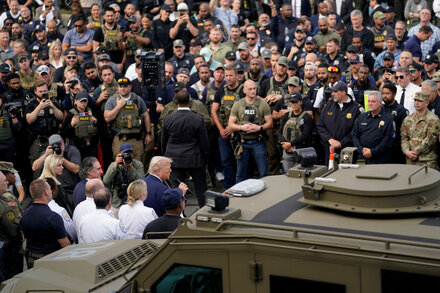
Washington D.C., the seat of the United States federal government, has long served as a critical nexus for the development, implementation, and scrutiny of national policies. In the realm of immigration enforcement, the nation’s capital has uniquely positioned itself as a focal point for the operations of U.S. Immigration and Customs Enforcement (ICE), making it a significant, albeit often contentious, testing ground for the agency’s strategies and public perception.
The city’s role as the headquarters for ICE, situated within the Department of Homeland Security, ensures that policy directives originate and are administered from Washington. This central location places the agency under constant congressional oversight, media attention, and intense lobbying from diverse interest groups, ranging from pro-enforcement advocates to immigrant rights organizations.
A Crucible for Policy and Public Opinion
The District’s distinct political landscape contributes to its character as a “testing ground.” Federal lawmakers frequently engage in debates over ICE’s budget, authority, and operational methods, often with immediate public and media response. Proposed legislation, oversight hearings, and presidential directives concerning immigration enforcement are all part of the daily political discourse in Washington, setting precedents and shaping national policy.
Moreover, Washington D.C. is a hub for advocacy. Major civil rights organizations, human rights groups, and immigrant support networks maintain significant presences, actively monitoring and challenging ICE actions. Protests, demonstrations, and lobbying efforts targeting federal immigration policies are common occurrences, ensuring that ICE’s activities are under perpetual public scrutiny. This environment can force the agency to continually evaluate and, at times, adapt its communication and operational strategies in response to public and political pressure.
Legal Battleground and Local Dynamics
The federal court system in D.C. also plays a crucial role, often becoming the venue for high-stakes legal challenges against ICE policies and enforcement actions. Decisions made by courts in the District can have far-reaching implications, influencing how the agency operates nationwide and defining the legal boundaries of its authority.
Furthermore, the District of Columbia’s local government has at times expressed a different stance on immigration enforcement than the federal government. As a jurisdiction that has declared itself a “sanctuary city,” D.C. highlights the tension between federal mandates and local autonomy, creating a complex operational environment for ICE agents. This dynamic often tests the boundaries of intergovernmental cooperation and conflict.
In 2017, Mayor Muriel Bowser emphasized the city’s stance, stating: “The District of Columbia is, and will remain, a sanctuary city. We will continue to protect our immigrant families and ensure that they feel safe and welcome here.”
This interplay of federal power, congressional scrutiny, robust advocacy, and unique local government positions makes Washington D.C. a critical barometer for immigration policy. It is a place where new directives are conceived, publicly debated, legally challenged, and where their resilience is tested against a backdrop of intense political and social engagement.
Source: Read the original article here.





